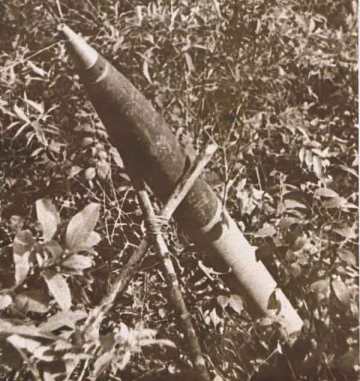Blast from the past: Rocket Attack on Kabul
By Tim Foxley
Summary: Four rockets landed in the capital yesterday, killing and injuring four. Insurgents likely (but not conclusively) to blame. Too early to tell if this is a shift in tactics.
Apparently yesterday in the early morning, at least four rockets struck the city within ten minutes of each other, two near the airport and two more centrally. The aiming point was believed to be to the north-east of the airport. One civilian was reported killed.
Analysis and Outlook
The incident caught my eye as it reminded me of what used to be a “standard” occurrence in Kabul, wreaking massive destruction across the city as the warlord long-range weapon of choice during the civil war. Gulbuddin Hekmatyar, with many other warlords, has many war crimes charges to answer for his ferocious bombardment of the city during the 1990s. And even in the post-Taliban period from late 2001, they seemed to be a simple but effective way of getting attention, whether you were a warlord or an insurgent group. I suspect dozens – more likely hundreds – or rockets have landed in and around the capital in the last 11 years. Statistics on rocket attacks used to be collected like suicide attack stats are compiled now. I remember one landing during my first time in Afghanistan in 2006 – it certainly focused my attention.
Background noise?
But in the current security situation, the rocket attack (107mm or 122mm) clearly has much less impact than a suicide attack or complex attack, suggesting strongly the evolution of the effectiveness of the insurgent attacks. Rocket attacks were never known for their accuracy – often they are propped up against rocks, aimed by rough line of sight and then loosed off. More sophisticated metal frames or individual rocket tubes brought some improvement but really they were an area weapon – fired off in the general direction. The city centre is a relatively dense “target rich environment” – government buildings, foreign embassies, ISAF HQ, etc. This attack seems to confirm the problems with accuracy, seemingly landing in as many as three separate city districts, but also perhaps the haste with which the attackers had to operate. Police reports to have discovered an additional rocket ready to launch always leave me slightly sceptical. While they might certainly be able to produce an unfired rocket today if they were requested to do so, I would still be interested to know whose it was and how it came to be in their possession.
Although the Taliban and associated insurgent groups are likely to be responsible for the attack, it will always be difficult to attribute them with any confidence. Other groups, local players, criminals, warlords, etc can never entirely be ruled out. They seem to arrive in the context of other significant political or security developments or times of decision – election time, for example. It is a way of getting attention, rattling a sabre and increasing the tension and uncertainty. Some groups like to do that.
I’m trying to avoid over-analysing this. If a new trend of rocket attacks broke out, however, amongst other potential causes (warlord turf war?), I might be tempted to look again at insurgent capabilities and tactics. Are they finding it too difficult to penetrate into the heavily guarded city these days? How they suffered a temporary drop in suicide bombers and trained and motivated “complex” attackers? A new means of keeping up regular pressure in the context of “talks”?

